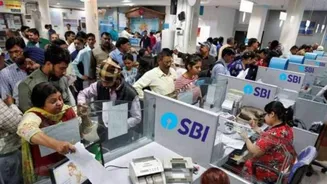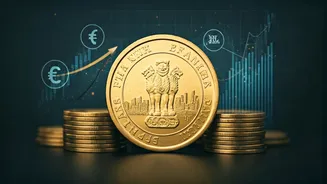UPI's Payment Revolution
The Reserve Bank of India (RBI) report highlights a remarkable increase in UPI transactions since 2019, with a nearly sixfold rise. This illustrates a major
shift in how Indians conduct financial transactions. This growth is attributed to the convenience and ease of UPI, which has quickly gained popularity across various demographics. The government's initiatives to promote digital payments, combined with increasing mobile phone and internet penetration, have also been critical. UPI's user-friendly interface and integration with various payment applications have facilitated its widespread adoption. This transformation has reshaped the payment landscape, offering a convenient alternative to traditional methods.
Factors Driving Growth
Several factors have propelled the growth of UPI. One key element is its accessibility. UPI allows immediate fund transfers through mobile devices, eliminating the need for physical cash or traditional banking procedures. The integration of UPI with a variety of payment apps, including popular platforms used daily, has further amplified its usability. Also, government support has been crucial. Campaigns to promote digital payments and streamline regulations have fostered a conducive environment for UPI's expansion. Furthermore, the increasing use of smartphones and readily available internet access have created a robust infrastructure, essential for UPI's reach across both urban and rural India. These combined factors have established UPI as a leading payment solution.
Impact on Economy
The rapid adoption of UPI has brought about notable economic effects. It has enhanced efficiency in financial transactions by reducing the time and effort needed for payments. This, in turn, has fueled business activity and stimulated economic development. Furthermore, UPI has enhanced financial inclusion by allowing people, even those with limited access to traditional banking, to participate in the digital economy. This ease of use fosters a more transparent and accountable system, helping to curb cash-based transactions and related inefficiencies. With digital transactions becoming the norm, UPI's influence is seen in sectors across retail, e-commerce, and services. The RBI's report emphasizes the transformative role of UPI in shaping India's economic future.
Future Prospects
Looking ahead, the outlook for UPI appears bright. Continuous technological advancements and innovations in digital payments will further improve UPI's capabilities. There's potential for enhanced security features, expanded functionalities, and integration with emerging technologies like artificial intelligence and blockchain. Moreover, greater emphasis on interoperability and standardization will help UPI to establish itself globally. As India's digital economy grows, UPI is expected to play a central role in driving financial inclusion and modernization. Continuous adoption will require ongoing support from both government and the private sector to ensure the continued growth and security of this crucial digital payment infrastructure. The RBI report illustrates the potential for UPI to transform India's financial sector.














